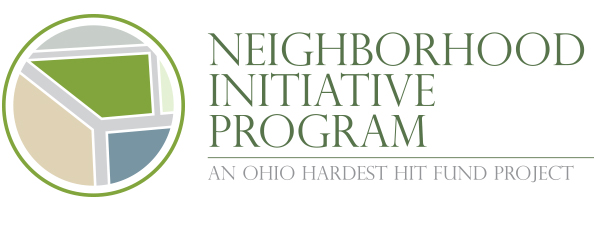The Greater Ohio Policy Center’s latest report, “Taking Stock of Ohio County Land Banks: Current Practices and Promising Strategies,” places land banks in the larger context of community revitalization, and highlights promising county land bank programs that have the potential to greatly contribute to sustainable economic and community redevelopment throughout Ohio.
The Ohio Land Bank Conference
By Nicholas J. Blaine, Project Coordinator Last week, on September 11, I attended the Thriving Communities Institute’s 4th annual Ohio Land Bank Conference in Columbus, Ohio. The event brought together experts in the field to discuss best practices and share successes from Ohio’s 22 land banks. As a new staffer for GOPC, I saw the event as a wonderful opportunity to learn more about the role of land banks in building a sustainable Ohio.
The morning began with remarks from Jim Rokakis, Vice President of the Western Reserve Land Conservancy and Director of its Thriving Communities Institute. The conference covered a wide range of topics, from the basics of vacant property management to how hemp can be used to promote sustainable growth.
The first breakout session I attended focused on the decision between demolition and rehabilitation that land banks face with virtually every property acquisition. The panelists Paula Boggs Muething, Frank Ford, Terry Schwarz, and Jeff Marks provided some excellent insights on how to weigh options and make the best decision in a variety of circumstances.
The lunch keynote address was delivered by Matthew Lampke, Mortgage Foreclosure Counsel for the Ohio Attorney General, and Jim Rokakis. They explained that more than 13,500 vacant and blighted properties have been demolished statewide through the Moving Ohio Forward grant program.
Following lunch, I went to a talk by Mara Hada and Lisa Patt-McDaniel about tax credit financing. I also had the chance to learn about the success of the Metro West housing development near the Hollywood Casino in Columbus from John Rosenberger. Finally, I attended a session led by Carlie Boos about the Ohio Housing Finance Agency’s Neighborhood Initiative Program, which receives technical assistance support from GOPC.
The conference was attended by approximately 275 people over the course of two days. Attendees represented a mix of land bank staffers, private sector lawyers and financiers, non-profits, and government representatives. This diversity embraces comments made by Lisa Patt-McDaniel, Director of Community Development for the Ohio Capital Corporation for Housing and GOPC Board Member, that housing solutions don’t happen in a vacuum, they happen in a community.
The Neighborhood Initiative Program

Overview of the Neighborhood Initiative Program
The Ohio Housing Finance Agency (OHFA) received approval from the U.S. Department of the Treasury to utilize up to $60 million of Ohio’s remaining Hardest Hit Funds (HHF) to assist with stabilizing local property values through the demolition of vacant and abandoned homes across Ohio.
The Neighborhood Initiative Program (NIP) is designed to stabilize property values by removing and greening vacant and abandoned properties in targeted areas in an effort to prevent future foreclosures for existing homeowners.
The Neighborhood Initiative Program (NIP) will fund strategically targeted residential demolition in designated areas within the state of Ohio. OHFA will partner with County Land Revitalization Corporations (“land banks”) or an entity that has signed a cooperative agreement with an established county land bank.
- NIP will be available to the 17 Ohio counties that have an established land bank.
- OHFA has issued a Request for Proposals from the state’s county land banks.
- The program begins in early 2014 and concludes in 2017.
Technical Assistance
OHFA has contracted GOPC to advise OHFA and applicants on the implementation of the Neighborhood Initiative Program (NIP).
Assistance includes:
- Consultation with applicants regarding best practices for the selection of neighborhoods and properties for the program
- Strategic and technical advice to eligible applicants in responding to the RFP for the NIP
Best Practices for Strategic Demolition
The guidelines for the Neighborhood Initiative Program (NIP) are available on OHFA's website.
This webpage provides information and resources to assist applicants as they prepare their applications for NIP funding and implement their programs according to the NIP guidelines.
Program applicants must focus on:
- Target areas
- Demolition and greening of abandoned residential properties
- Preventing further reduction in property values
- Preventing possible foreclosure of existing residential homes
Below is GOPC's presentation on best practices for implementing the NIP program.
The following resources may be useful to NIP applicants and grantees:
- “Green Investment Strategies: How They Matter for Urban Neighborhoods” by Wachter, Gillen and Brown of the Wharton School of Business at University of Pennsylvania, 2007
- Land Bank Playbook by Western Reserve Land Conservancy’s Thriving Communities Institute
- “Laying the Groundwork for Change: Demolition, urban strategy, and policy reform” by Alan Mallach, Brookings Metropolitan Policy Program, Sept 2012
- NSP Land Banking Toolkit from OneCPD Resource Exchange
- “Policy Recommendations: Greening Vacant Lots for Pittsburgh’s Sustainable Neighborhood Revitalization” produced by Carnegie Mellon University Heinz School of Public Policy and Management, Fall 2006
- "Re-imagining Cleveland: Ideas to Action Resource Book" by Kent State University's Cleveland Urban Design Collaborative and Cleveland Neighborhood Progress, January 2011
- “Vacant Property: Strategies for Redevelopment in the Contemporary City” by Luke Wilkinson, Georgia Institute of Technology, MCRP 2011
- “Vacant to Vibrant: A guide for revitalizing vacant lots in your neighborhood” produced by Carnegie Mellon University Heinz School of Public Policy and Management, Fall 2006


